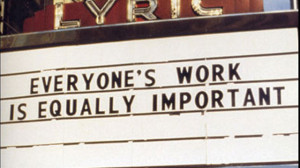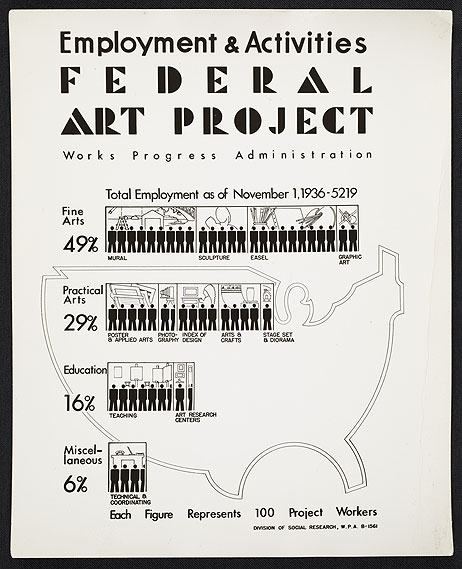This week, President Obama gave a speech at a General Electric plant in Waukesha, Wisconsin, as part of a cross-country tour to extol opportunities for all. The President’s talking points included plans to make new jobs, to train Americans to fill those jobs, to guarantee children access to an education, and to make sure “hard work pays off.” In his speech the President reflected on how offshore manufacturing took away a lot of American jobs and noted, “A lot of young people no longer see the trades and skilled manufacturing as a viable career. But I promise you, folks can make a lot more, potentially, with skilled manufacturing or the trades than they might with an art history degree.” This last observation, not surprisingly, has generated a response from arts professionals. (SFMOMA created the Twitter hashtag #ArtDegreesWork to collect career stories from people with art degrees.) Anticipating a potential outcry from his vast base of art historian supporters, the president went on to say, “Now, nothing wrong with an art history degree — I love art history. So I don’t want to get a bunch of emails from everybody.” Yes, Mr. President, when you rile up art historians, the end result is a lot of writing.
Charles Desmarais, president of the San Francisco Art Institute, one of the nation’s oldest art schools, posted: “Blue collar family. Barely literate dad. Yet I’ve had a 30+ year career as museum director and college president.” Museums around the country, including the Walker Art Center and the Portland Museum of Art, have also sounded off in support of SFMOMA’s Twitter-facilitated dialogue. For its part, SFMOMA posted a quote from Michelle Obama noting, “The arts are not just a nice thing to have or do if there is free time or if one can afford it… They define who we are as a people and provide an account of our history for the next generation.”
I’ve reflected on President Obama’s comments with mixed feelings. On one hand, his point is well taken. At a recent dinner party, I sat between two colleagues who spoke about the difficulties of surviving as adjunct professors in the arts. One spoke of teaching at a prestigious school — we listeners raised our eyebrows appreciatively when he mentioned its name — but then told us there was no money left over after he paid travel expenses. “It looks good on a resume though,” he added. I nodded in agreement, but I also wondered at this curious trend, seemingly singular to the arts, to be perpetually resume-building without increased pay.
The woman on my right talked about the feast or famine compulsion to take every teaching opportunity given; as a result, she was gearing up to teach nine classes at three different schools, spread across the biggest traffic commutes in the Bay Area. “It’s alright,” she said patting my arm when I went mute, “I know it’s horrifying.” Paid opportunities are scarce, while unpaid work abounds. Perhaps this is why an art degree has become something of a joke — more often than not, we might as well carry signs that say “Will Work for Work.”
On the other hand, I wonder why the “hard work” of the arts sector doesn’t “pay off” in this context? In a recent study titled Arts & Economic Prosperity, Americans for the Arts found that nonprofit arts and culture organizations added $61.1 billion annually to the economy, while functioning as the key promoters of their cities and regions. An additional $74.1 billion was generated by event-related revenue from audiences, including dining, transportation, and even childcare costs.




